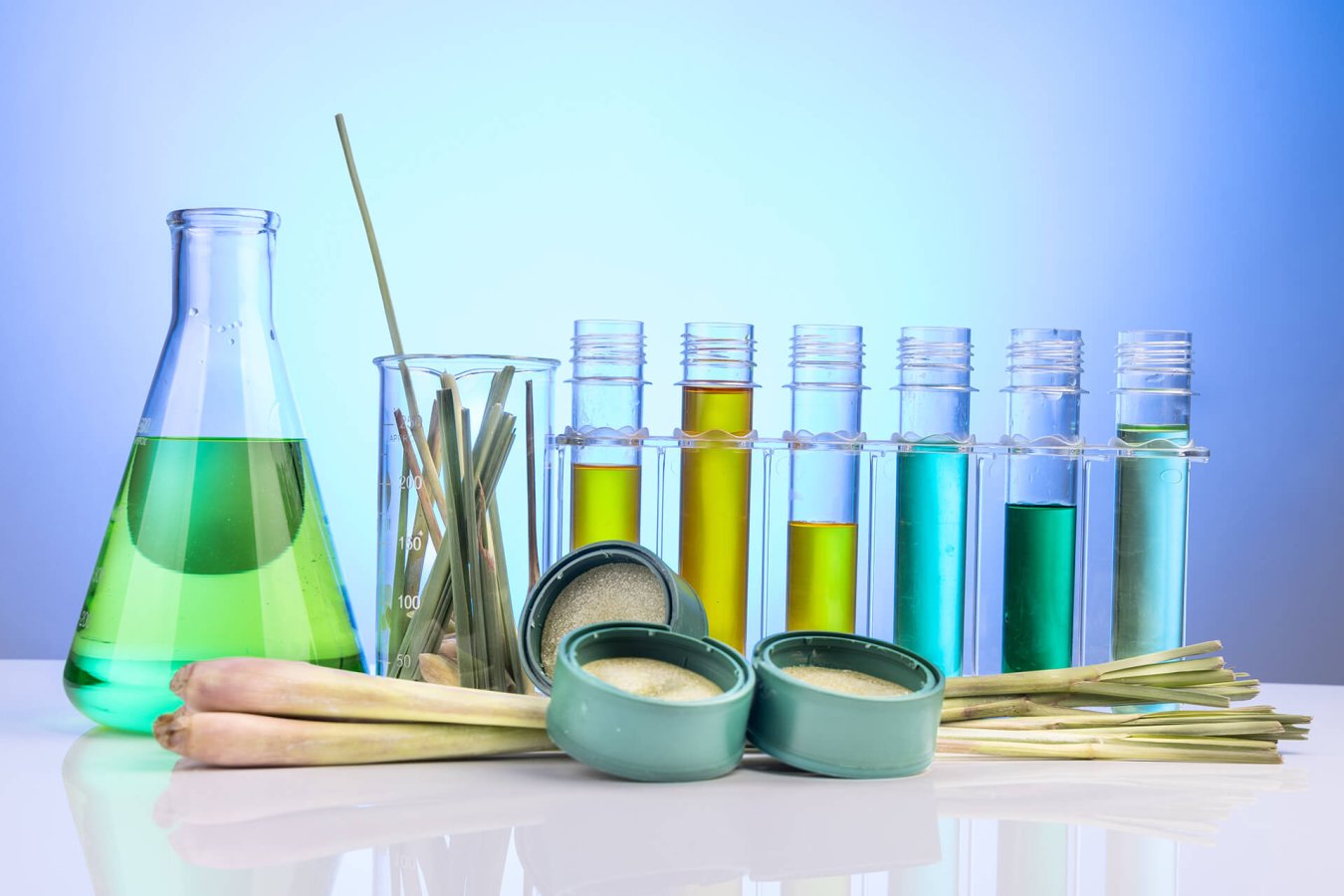Chemicals
These chemicals are common additives used in the food
industry for various purposes. Each is added to improve the flavor, texture,
shelf life, and appearance of food products. Here are explanations of these
chemicals and their uses in food production:
- Potassium Sorbate:
Definition: Potassium sorbate is a preservative used to prevent the growth of mold and yeast in foods.
Uses: It is used in products like cheese, yogurt, wine, syrups, baked goods, fruit juices, and dried fruits to prevent microbial spoilage.
Advantages: It extends shelf life and helps maintain product freshness. - Guar Gum:
Definition: Guar gum is a natural polysaccharide derived from the seeds of the guar plant, used as a thickener and stabilizer.
Uses: It is used as a thickener in ice cream, sauces, salad dressings, soups, baked goods, and dairy products.
Advantages: It has a high water absorption capacity and enhances the thickness of food products. - Soy Lecithin:
Definition: Lecithin, derived from soybeans, is an emulsifier. It helps mix oil and water to create a homogenous mixture.
Uses: It is used as an emulsifier in chocolate, margarine, biscuits, cakes, processed foods, dairy products, and candies.
Advantages: It helps maintain the homogeneity of products and extends shelf life. - Ammonium Bicarbonate:
Definition: Ammonium bicarbonate is a leavening agent that produces gas during baking, causing the dough to rise.
Uses: It is used as a leavening agent in biscuits, crackers, cakes, and some pastries.
Advantages: It ensures that products are light and fluffy. - Maltodextrin:
Definition: Maltodextrin is a carbohydrate obtained by breaking down starch, often used as a filler or thickener.
Uses: It is found in sports drinks, desserts, sauces, baby foods, convenience foods, and baked goods.
Advantages: It adds bulk to products and increases water retention. - Aspartame:
Definition: Aspartame is an artificial sweetener that is sweeter than sugar and used in low-calorie foods and drinks.
Uses: It is used as a sweetener in diet drinks, gum, desserts, yogurts, and candies.
Advantages: It provides sweetness with low-calorie content. - Monosodium Glutamate (MSG):
Definition: MSG is a flavor enhancer that adds umami (the fifth taste) to foods.
Uses: It is used in instant soups, spice blends, sauces, processed meat products, snacks, and Chinese cuisine.
Advantages: It enhances the flavor of foods and balances the taste between sweet, sour, salty, and bitter. - Xanthan Gum:
Definition: Xanthan gum is a natural polysaccharide produced by microbial fermentation, used as a thickener and stabilizer.
Uses: It is used as a stabilizer and thickener in sauces, ice creams, salad dressings, beverages, and gluten-free products.
Advantages: It increases the viscosity of liquids and prevents the separation of ingredients. - Ascorbic Acid (Vitamin C):
Definition: Ascorbic acid is a natural antioxidant and preservative, also known as vitamin C.
Uses: It is used as a preservative and antioxidant in fruit juices, jams, meat products, and baked goods.
Advantages: It protects the product from oxidation and enhances its nutritional value. - Dextrose:
Definition: Dextrose is a form of glucose and acts as a sweetener. It is often used as a source of carbohydrates.
Uses: It is used as a sweetener in desserts, beverages, candies, and sports nutrition products.
Advantages: It provides an energy source and enhances the sweetness of products. - Mastic Gum:
Definition: Mastic gum is a natural resin obtained from the mastic tree and is used as a thickening agent in food products.
Uses: It is used as a thickener in gum, ice cream, bakery products, and beverages.
Advantages: It improves the texture of products and provides an aromatic flavor. - Sorbitol:
Definition: Sorbitol is a sugar alcohol used as a low-calorie sweetener. It also has moisturizing properties.
Uses: It is used as a sweetener and humectant in diet products, candies, gums, baked goods, and some medications.
Advantages: It reduces calorie content and helps retain moisture in products.
In conclusion, these additives are used to improve the texture, flavor, shelf life, and nutritional value of food products. Each serves a different purpose and has broad applications in the food industry. These substances play a critical role in modern food production, ensuring the quality, safety, and satisfaction of consumers.

